Sumo: Is Japan′s national sport on the ropes? | Asia | An in-depth look at news from across the continent | DW | 10.10.2022
Japan's ancient sport might lose its fans if Sumo wrestlers continue to show disappointing performances in the ring.
Critics slammed poor technique, weak physical strength and the large number of top-ranked wrestlers who pulled out of the recent Autumn Grand Sumo Tournament in Tokyo with injuries.
One editorial even predicted that spectators would soon turn their back on Japan's national sport, reducing it to irrelevance, unless improvements are forthcoming.
To underline their argument, critics pointed out that the overall victor after 15 days of bouts at Tokyo's Ryogoku Kokugikan Stadium was Tamawashi, who at the start of the tournament was ranked "hiramaku" — the fifth-highest classification for wrestlers.
Born in Mongolia, Tamawashi had been a largely unspectacular fighter battling in the middle ranks of the sport, but whose September 25 victory made him the oldest winner of a "basho" tournament since 1958.
Three days after the 37-year-old accepted the Emperor's Cup, an editorial in the Sankei Shimbun insisted that the "slump in quality in sumo matches cannot go on."
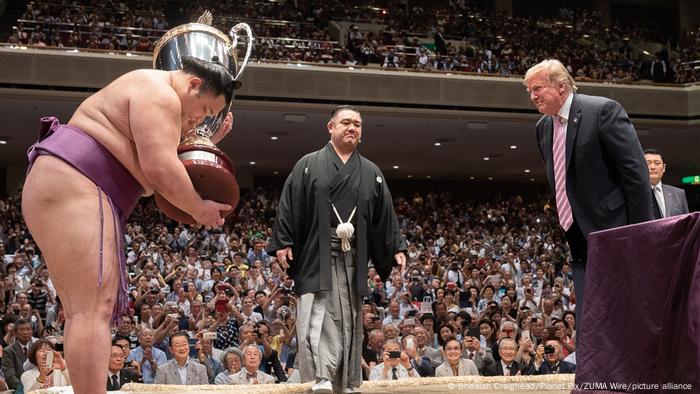
US President Donald Trump presents the Presidents Cup to Asanoyama at Ryogoku Kokugikan Stadium in 2019
'Poor performance'
The newspaper pointed out that virtually every wrestler in the top two ranks — "yokozuna" and "ozeki" — lost early bouts that effectively ruled them out of the running for the cup, with the "poor performance of the ozeki-ranked wrestlers being nothing but serious."
The situation was compounded by the highest-ranked wrestler in the tournament, Terunofuji, withdrawing on the 10th day due to injuries to both knees. The wrestler is understood to have required surgery and will likely miss at least two more tournaments — dealing another blow to the sport. The commentary also took issue with training regimens.
The Sankei warned, "Hollowing out of the upper ranks will be inevitable. If this situation continues, the national sport cannot escape the slander of merely being a signboard" of what the sport used to be, adding that unless the Japan Sumo Association (JSA) takes urgent action, fans of the sport will show their displeasure by no longer attending tournaments.
Sports journalist Yoichi Igawa, who covers the sport that dates back more than 1,300 years, echoed that sentiment and cautioned that sumo's reluctance to modernize may be its undoing.
"I fear it is becoming an obsolete sport in Japan," he told DW. "We say sumo is our national sport, but crowds are thinner than in the past and the vast majority of people who do go are old."
"This is not a sport that appeals to young people, so what happens when the older fans are all gone?"
Resisting change
Yet too many people in the sumo world resist change, he continued.
"It's a very small, conservative world where all the decisions are made by veterans of the ring according to a strict hierarchy," he said. "They do not like to see changes, they don't like outside critics and they don't much like to see foreign wrestlers being the best at a 'Japanese sport.'"
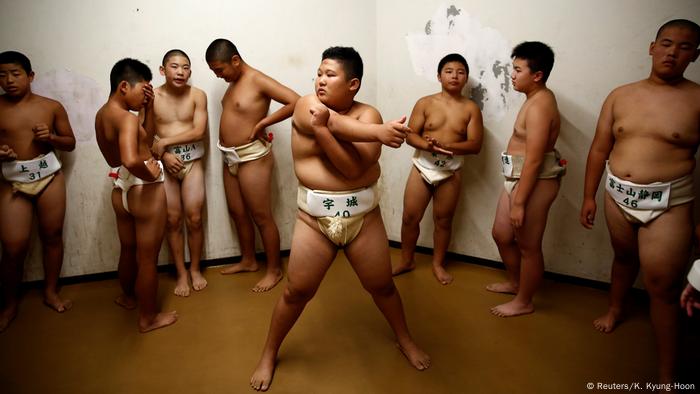
Sumo is tough and physical demanding, especially for young and lower-ranked wrestlers
Fred Varcoe, a British journalist who has written about sumo for publications around the world, agreed that sumo "is stuck in its sense of traditionalism, to the point that the people who oversee sumo are simply unable to adapt, update or refine the sport."
Many successful wrestlers who had retired and joined the JSA made efforts to introduce changes to make the sport more accessible and appealing, Varcoe pointed out. But these relatively young "elders" of the sport are outnumbered and politically outmaneuvered in the association by its deeply conservative members.
One such wrestler with a reformist agenda was Takanohana, who won 22 tournaments in the space of 19 years (the sixth-best record in history). He joined the JSA board in 2010 but resigned in 2018.
Adding to sumo's issues are a number of scandals that have dogged its recent history — including assault allegations and illegal gambling on bouts — as well as drug-taking among wrestlers and links to organized crime groups.
Most sumo wrestlers must live in communal "stables," where their lives are strictly dictated by tradition. In 2007, stable-master Junichi Yamamoto was arrested over the death of a novice wrestler, 17-year-old Takashi Saito, and it later emerged that Yamamoto hit him on the head with a beer bottle after he tried to run away due to bullying.
'May not survive'
"The quality of wrestlers will fluctuate up and down, just as it does in any sport," Varcoe described. "The bigger problem that sumo faces right now is that Japan has a rapidly aging population and there are not enough children coming through to take up the sport," he said.
"Young Japanese want to play on their mobile phones; they don't want to get up early and train for a physically demanding sport like sumo."
In the past, one effective solution has been in the past is to bring in more wrestlers from overseas, he continued. "There have been Hawaiians and Mongolians who have risen to the top of the sport," Varcoe said. But he cited continued reluctance among many "as they want to keep it Japanese."
"It's a tradition as much as a sport. But if things don't start changing, then it's not going to grow," he said. "And it may not even survive."
Edited by: Keith Walker
-

Japan through the eyes of women photographers
'Zaido'
Devastated by a series of tragic accidents, Yukari Chikura followed a dream in which her deceased father appeared, asking her to go to a remote village in Tohoku. There she took part in a 1,300-year-old festival called Zaido, capturing it with her camera. "Seeing people fight again and again to preserve heritage gave me the courage to live again," she said of the experience.
-
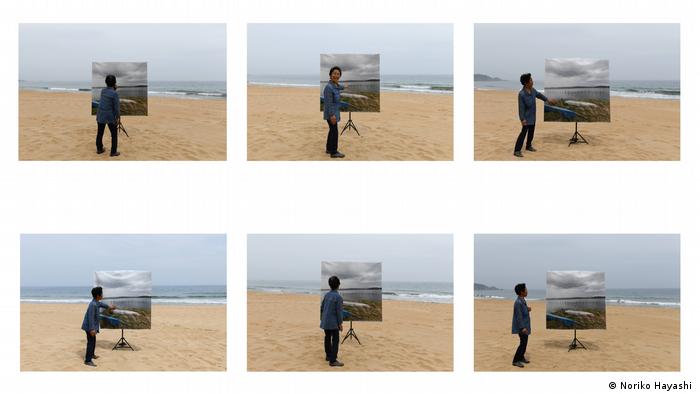
Japan through the eyes of women photographers
'Sawasawato'
From 1959-84, around 93,000 people left Japan for North Korea as part of a repatriation program. Some 1,800 were Japanese women who had married Korean men. Noriko Hayashi portrays these women in her series "sawasawato." "I visited these elderly women, interviewed them, and took photos. I traced their memories as I traveled back and forth between Japan and North Korea," Hayashi (above) said.
-
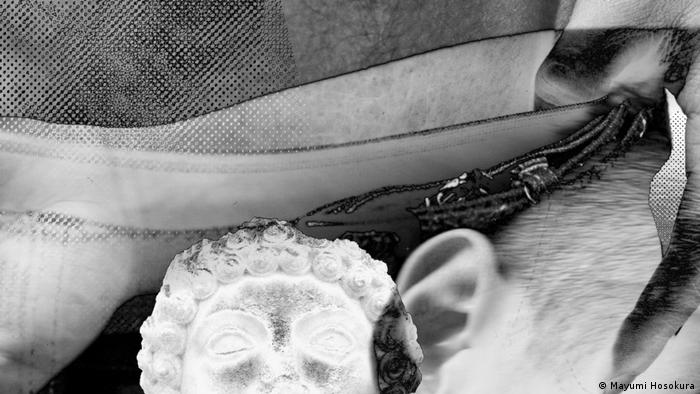
Japan through the eyes of women photographers
'New Skin'
Mayumi Hosokura's digital collages compose a new world where distinctions of sex are dissolved. Her works use her past photos of male nudes and male museum sculptures, as well as selfies found on the internet and magazine pictures. "Not only in artworks but in our daily lives, gender might be a bit more neutral and connected closer," Hosokura commented.
-
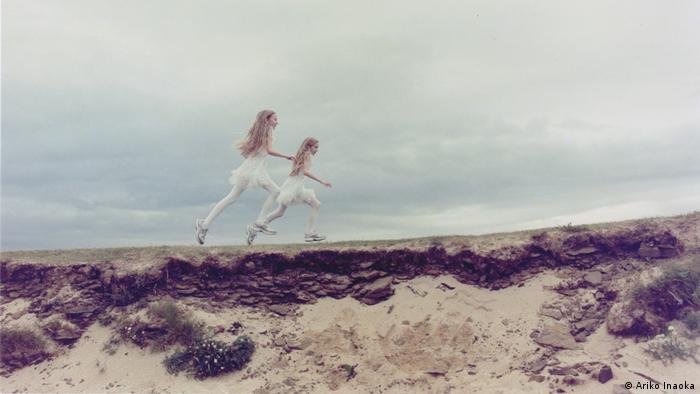
Japan through the eyes of women photographers
'Eagle and Raven'
After a trip to Iceland, where she was fascinated by water landscapes and their unique lights, Ariko Inaoka started to photograph twin sisters she had met there, returning every year for eight years. They became her muses: "They told me ... 'We dream the same dreams together.' They made me think that even though we don't dream the same in our sleep, we share the same dreams," Inaoka said.
-
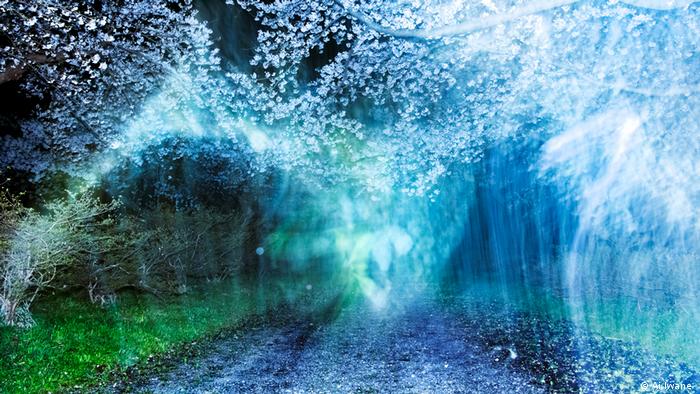
Japan through the eyes of women photographers
'A New River'
When the cherry blossom viewings that usually take place each spring in Japan were cancelled due to COVID, Ai Iwane captured the trees blooming in the dark. Her photos reflect the ambiguous borders between nature and human: "When I walk under the cherry blossoms in the dark, I often hear the voice of wild animals … the boundaries between human and nature became blurred," the artist explained.
-
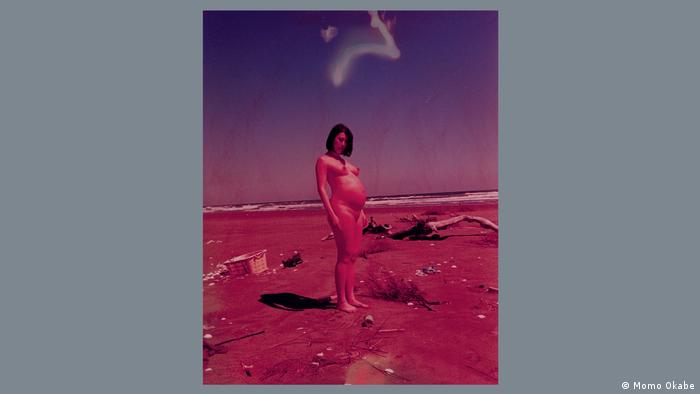
Japan through the eyes of women photographers
'Ilmatar'
Momo Okabe's series Ilmatar — the name of a Finnish goddess of air — is inspired by her own experience. Okabe, who considers herself asexual, became pregnant through IVF. As fertility treatments become standard, she believes the process is worth recording: "Impossible things happen ... If we pay more attention to such things, and photograph them, life would be even more beautiful."
-
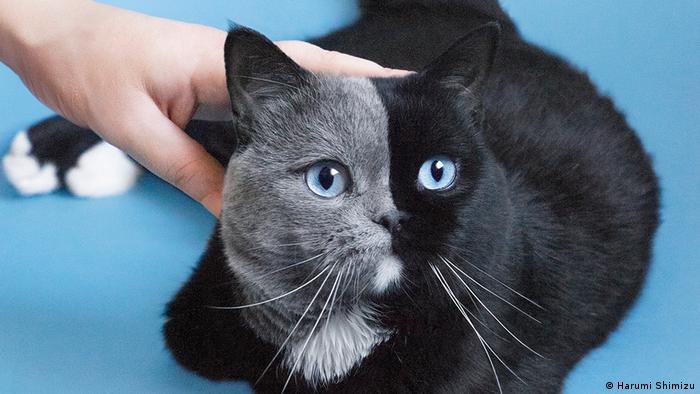
Japan through the eyes of women photographers
'Mutation / Creation'
Harumi Shimizu's series documents human fascination with mutations. Her work, an inventory of animal and vegetable strangeness, sublimates the weirdness and questions the concept of beauty: "People have long responded to mutant animals and plants. This kind of curiosity is universal to some extent. I want to know more about [it] ... so I collect these mysterious things and take pictures of them."
-
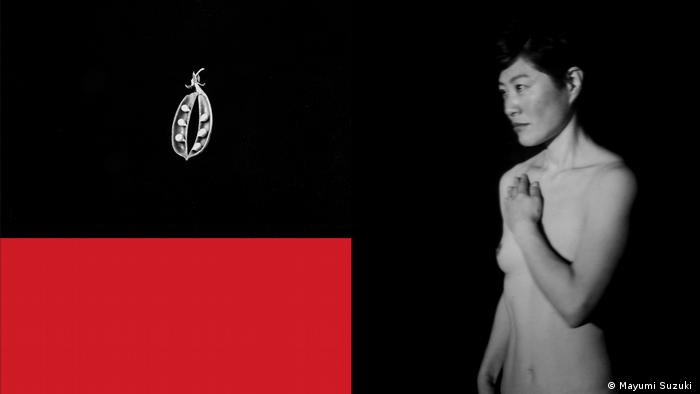
Japan through the eyes of women photographers
'Hojo'
In "Hojo," Mayumi Suzuki uses her personal experience of undergoing infertility treatment to talk about the complexity of women's bodies. "When I went to the market when after I gave up, I found … all these odd-shaped unsold things. I thought they were just like me. I wanted to express this vague feeling with my own body," Suzuki said.
-
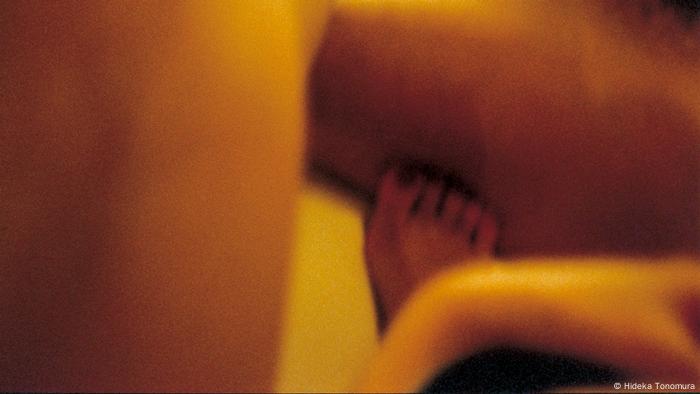
Japan through the eyes of women photographers
'Die of love'
Hideka Tonomura explores relationship intimacy through blurry and sensorial pictures, thereby depicting her own "theater of love." Photography became cathartic for her while she was dealing with traumatic experiences: "I kept shooting to live, to keep me alive." Tonomura also initiated the Shining Woman Project, which sheds light on women fighting cancer and combats the prejudices they face.
-

Japan through the eyes of women photographers
'Negative ecology'
In Tamaki Yoshida's pictures, stunning landscapes and wild animals from the island of Hokkaido are eroded by detergents, shampoos and other chemicals contaminating water and environment. "I always believe the animal world and human world are both equal. Rather than invading or being invaded, it is best to coexist symbiotically. I think humans are capable of that," Yoshida commented.
Author: Aimie Eliot